In order to generate a more inclusive dataset of Pseudomonas genes mapped to putative in-paralogs and putative orthologs in other Pseudomonas species/strains, we developed a Pseudomonas Orthologous Groups classification system.
To generate ortholog groups, pair-wise DIAMOND searches were run on all genomes in the database to find reciprocal best hits (RBHs) for each gene. These analyses often resulted in multiple candidate genes for RBH status, which were narrowed down by examining the similarity between the query's flanking genes and the hit's flanking genes. If two candidate genes were directly adjacent, they where both accepted as RBHs that involve putative in-parology.
Pairwise intra-genome DIAMOND searches were also performed to acquire in-paralog information (i.e. gene duplications occurring after species divergence). If two genes in one genome were reciprocally more similar to each other than to any gene in the other genomes, the two genes were designated putative in-paralogs. Ortholog groups are built by starting with a seed gene and then adding all genes to which there is a RBH or in-paralog relationship.
Every new gene added to an ortholog group was then treated as a seed gene and the addition process was repeated until all qualifying genes had been added. The result was the development of orthologous groups, specifically generated for Pseudomonas species genomes, which can be used to sort search results.
Pseudomonas Ortholog Group POG001198
| Strain | Locus Tag | Description | Same-Strain Members | Fragment ? | |
|---|---|---|---|---|---|
| Pseudomonas aeruginosa AZPAE12145 | NQ06_RS03110 |
peptidase
|
2 same-strain members: NQ06_RS03110 NQ06_RS25735 |
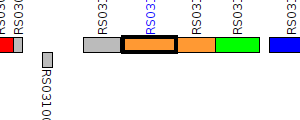
|
|
| Pseudomonas aeruginosa AZPAE12145 | NQ06_RS25735 |
peptidase
|
2 same-strain members: NQ06_RS03110 NQ06_RS25735 |

|
|
| Pseudomonas aeruginosa AZPAE12146 | NQ07_RS15795 |
peptidase
|
2 same-strain members: NQ07_RS15795 NQ07_RS04975 |
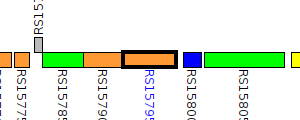
|
|
| Pseudomonas aeruginosa AZPAE12146 | NQ07_RS04975 |
peptidase
|
2 same-strain members: NQ07_RS15795 NQ07_RS04975 |
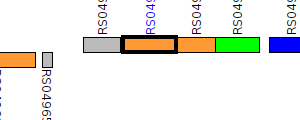
|
|
| Pseudomonas aeruginosa AZPAE12148 | NQ09_RS20285 |
transporter HasD
|
2 same-strain members: NQ09_RS20285 NQ09_RS08595 |
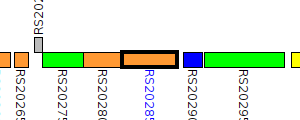
|
|
| Pseudomonas aeruginosa AZPAE12148 | NQ09_RS08595 |
peptidase
|
2 same-strain members: NQ09_RS20285 NQ09_RS08595 |

|
|
| Pseudomonas aeruginosa AZPAE12151 | NQ12_RS17465 |
transporter HasD
|
2 same-strain members: NQ12_RS17465 NQ12_RS03935 |

|
|
| Pseudomonas aeruginosa AZPAE12151 | NQ12_RS03935 |
peptidase
|
2 same-strain members: NQ12_RS17465 NQ12_RS03935 |
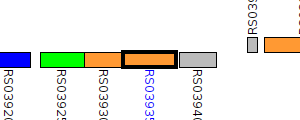
|
|
| Pseudomonas aeruginosa AZPAE12153 | NQ14_RS02115 |
transporter HasD
|
2 same-strain members: NQ14_RS02115 NQ14_RS24910 |

|
|
| Pseudomonas aeruginosa AZPAE12153 | NQ14_RS24910 |
peptidase
|
2 same-strain members: NQ14_RS02115 NQ14_RS24910 |
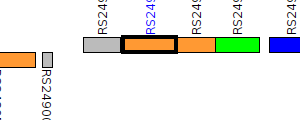
|
|
| Pseudomonas aeruginosa AZPAE12411 | NQ20_RS12040 |
peptidase
|
2 same-strain members: NQ20_RS12040 NQ20_RS14365 |
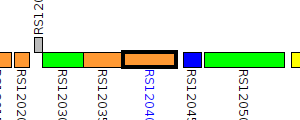
|
|
| Pseudomonas aeruginosa AZPAE12411 | NQ20_RS14365 |
peptidase
|
2 same-strain members: NQ20_RS12040 NQ20_RS14365 |

|
|
| Pseudomonas aeruginosa AZPAE12417 | NQ26_RS21185 |
peptidase
|
2 same-strain members: NQ26_RS21185 NQ26_RS03870 |

|
|
| Pseudomonas aeruginosa AZPAE12417 | NQ26_RS03870 |
peptidase
|
2 same-strain members: NQ26_RS21185 NQ26_RS03870 |
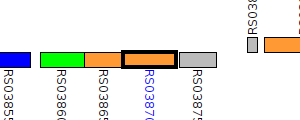
|
|
| Pseudomonas aeruginosa AZPAE13757 | NQ34_RS17845 |
peptidase
|
2 same-strain members: NQ34_RS17845 NQ34_RS03885 |
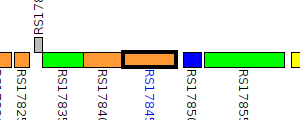
|
|
| Pseudomonas aeruginosa AZPAE13757 | NQ34_RS03885 |
peptidase
|
2 same-strain members: NQ34_RS17845 NQ34_RS03885 |

|
|
| Pseudomonas aeruginosa AZPAE13877 | NQ45_RS10835 |
peptidase
|
2 same-strain members: NQ45_RS10835 NQ45_RS25220 |
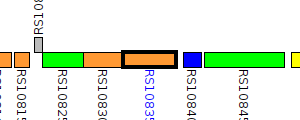
|
|
| Pseudomonas aeruginosa AZPAE13877 | NQ45_RS25220 |
peptidase
|
2 same-strain members: NQ45_RS10835 NQ45_RS25220 |

|
|
| Pseudomonas aeruginosa AZPAE14352 | NQ48_RS20735 |
peptidase
|
2 same-strain members: NQ48_RS20735 NQ48_RS12615 |
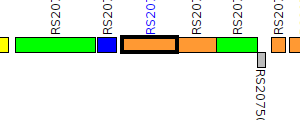
|
|
| Pseudomonas aeruginosa AZPAE14352 | NQ48_RS12615 |
alkaline protease secretion ATP-binding protein AprD
|
2 same-strain members: NQ48_RS20735 NQ48_RS12615 |
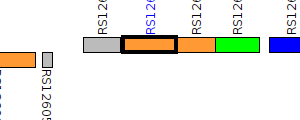
|